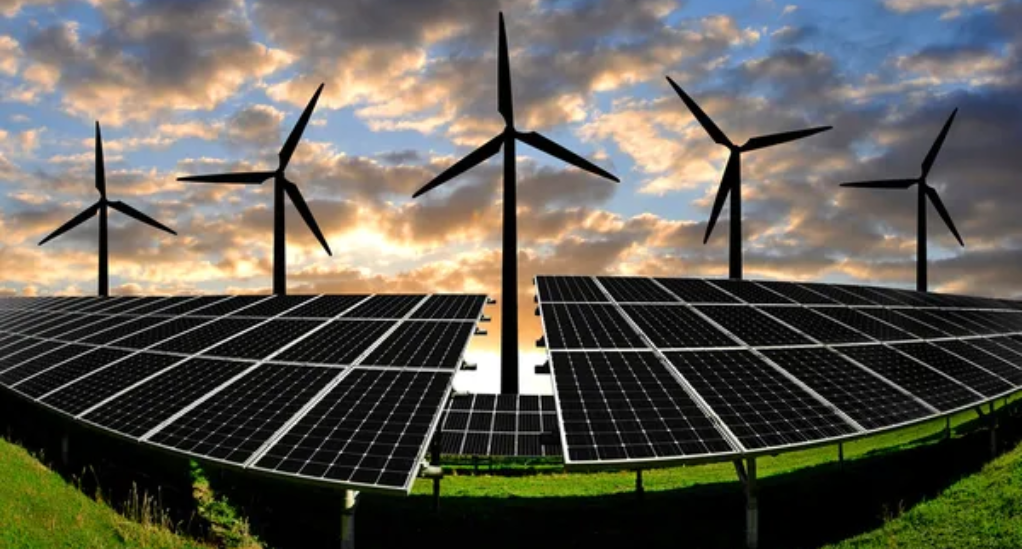In the quest for sustainable and clean energy sources, solar energy has emerged as a frontrunner, promising a future where power is harvested from the sun, the most abundant energy source on our planet. Before we delve deep into the intricacies of solar energy, it is essential to take a step back and understand its roots and the pivotal role it plays in the modern world. This section aims to provide a comprehensive introduction to solar energy, setting the stage for a detailed exploration of this renewable energy source.
A Brief History of Solar Energy
Solar energy is not a new concept; its utilization dates back to ancient civilizations. The Greeks, Romans, and Chinese used simple magnifying glasses to concentrate the sun’s rays for various purposes, including heating and lighting. Fast forward to the 19th century, the foundations of modern solar technology were laid with the development of photovoltaic cells, capable of converting sunlight directly into electricity.
In the 1950s, the space industry began to use solar technology, marking a significant milestone in its evolution. The subsequent decades witnessed a steady growth in research and development, culminating in the solar energy boom we see today, characterized by an exponential increase in solar installations worldwide.
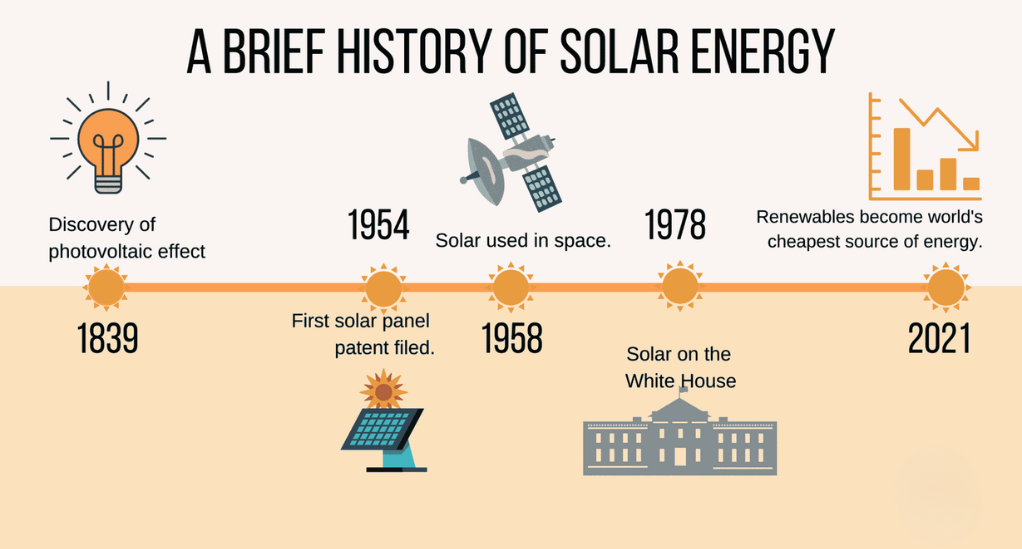
The Importance of Solar Energy in the Modern World
In the contemporary era, solar energy stands as a beacon of hope in the fight against climate change. As a clean, green source of energy, it has the potential to significantly reduce our reliance on fossil fuels, thereby decreasing greenhouse gas emissions. Moreover, solar energy presents an economically viable option, with costs plummeting over the years due to advancements in technology.
Solar energy is not just about electricity generation; it encompasses a wide range of applications, including heating, cooling, and even desalination of water. Its versatility makes it an integral part of the global strategy to achieve energy sustainability and combat the adverse effects of climate change.
| Aspect | Solar Energy | Fossil Fuels |
|---|---|---|
| Environmental Impact | Low (Reduced carbon footprint) | High (Significant greenhouse gas emissions) |
| Sustainability | Renewable (Inexhaustible source) | Non-renewable (Finite resources) |
| Cost-Effectiveness | Increasingly affordable (Falling costs due to technological advancements) | Fluctuating (Dependent on market dynamics) |
| Applications | Diverse (Electricity, heating, cooling, desalination) | Limited (Mainly electricity and heating) |
What is Solar Energy and How Does it Work?
At its core, solar energy refers to the radiant energy emitted by the sun. It is a renewable and virtually inexhaustible source of power that has captivated scientists, engineers, and environmentalists alike. This section delves into the fundamentals of solar energy, explaining its various forms and how it can be harnessed for our benefit.
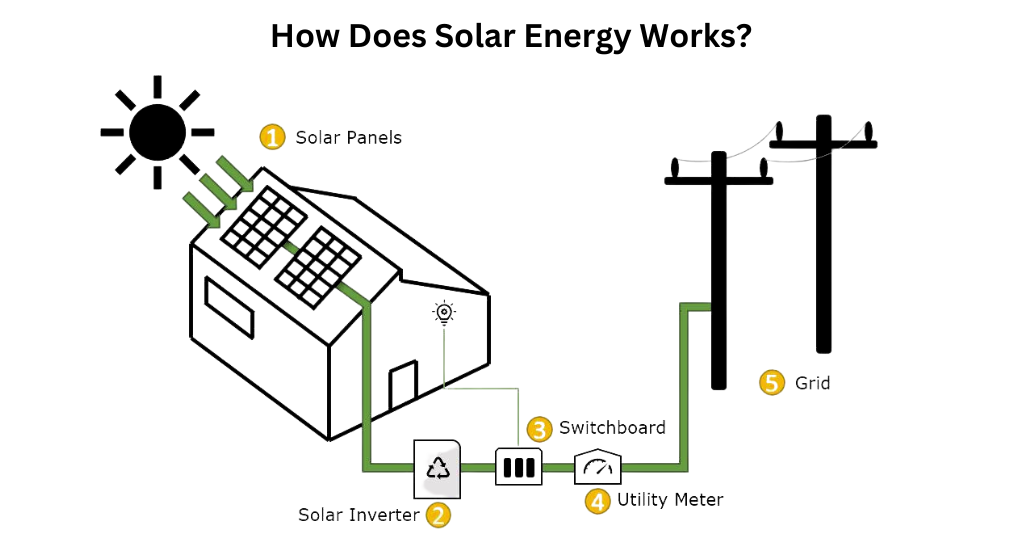
Forms of Solar Energy
Solar energy manifests in two primary forms:
- Photovoltaic (PV) Energy: This form of solar energy involves the conversion of sunlight directly into electricity using solar panels. Photovoltaic cells, also known as solar cells, are the building blocks of these panels. When sunlight hits these cells, it excites electrons, generating an electric current. This electricity can be used to power homes, businesses, and more.
- Solar Thermal Energy: Solar thermal energy, on the other hand, focuses on capturing the sun’s heat. Solar collectors, such as solar water heaters and parabolic troughs, concentrate sunlight to produce high-temperature heat. This heat can be utilized for space heating, water heating, and even electricity generation through steam turbines.
How Solar Panels Work
Solar panels are the cornerstone of photovoltaic energy generation. Understanding how they work is crucial to appreciating the marvel of solar energy.
- Photon Absorption: Solar panels are constructed with layers of semiconductor materials, typically silicon. When sunlight, comprised of tiny packets of energy called photons, strikes the solar panel’s surface, some of these photons are absorbed by the semiconductor material.
- Electron Excitation: The absorbed photons excite electrons within the semiconductor. This excitation generates an electric current, creating a flow of electrons.
- Electrical Output: Conductive metal plates on the sides of the solar cell collect the electrons and transfer them through wires as direct current (DC) electricity. An inverter then converts this DC electricity into alternating current (AC) electricity, which is suitable for powering homes and businesses.
Solar panels are often grouped into arrays to generate larger amounts of electricity. These arrays can be installed on rooftops, in solar farms, or even integrated into building materials.
Solar Efficiency
The efficiency of solar panels varies depending on several factors, including the type of panel, its orientation, and the local climate. On average, modern solar panels have an efficiency of around 15% to 20%, meaning they can convert 15% to 20% of the sunlight they receive into electricity. Ongoing research aims to enhance the efficiency of solar panels to maximize their energy production.
Solar Power
To understand the mechanics of solar energy, it’s essential to differentiate between two closely related terms: solar power and solar energy.
Solar Energy refers to the entire spectrum of energy emitted by the sun, including both radiant heat and light. It is the vast reservoir of energy that sustains life on Earth.
Solar Power, on the other hand, specifically refers to the conversion of solar energy into usable electricity. In essence, solar power is the practical application of solar energy to generate electrical power.
The Process of Converting Solar Energy into Electricity
The transformation of solar energy into electricity involves a series of intricate steps that rely on advanced technology and scientific principles. Here’s a simplified breakdown of the process:
Absorption of Sunlight
Solar panels, also known as photovoltaic panels, play a pivotal role in this process. These panels are equipped with solar cells, each containing semiconductor materials, typically silicon. When sunlight strikes the surface of these cells, it excites electrons within the semiconductor.
Generation of Direct Current (DC)
As mentioned earlier, the excitation of electrons creates an electric current within the solar cell. This electric current is in the form of direct current (DC), which is a continuous flow of electrical charge in one direction.
Inversion to Alternating Current (AC)
While DC electricity is suitable for some applications, most homes and businesses rely on alternating current (AC). An inverter is used to convert the DC electricity generated by the solar panels into AC electricity. This inversion process is necessary to power the electrical grid and appliances.
Integration with the Grid
The AC electricity produced by solar panels can be used on-site to power a building’s electrical needs. Excess electricity, if any, can be fed back into the electrical grid, often through a process called net metering. In some regions, homeowners can receive credits for the surplus electricity they contribute to the grid.
Storage for Later Use
In addition to grid integration, solar power systems can incorporate energy storage solutions such as batteries. These batteries store excess electricity generated during sunny periods for use during cloudy days or at night when solar panels are not producing electricity.
The Role of Solar Inverters
Solar inverters are crucial components of solar power systems. They serve multiple functions, including:
- Conversion: Inverting DC to AC for household use.
- Monitoring: Keeping track of the system’s performance.
- Safety: Ensuring system safety by disconnecting from the grid during power outages.
By effectively managing the flow of electricity, inverters optimize energy production and protect the grid from power surges.
Solar Energy Statistics
Current Global Statistics on Solar Energy Usage
Solar energy is experiencing exponential growth on a global scale. It has become a cornerstone of sustainable energy solutions, driven by technological advancements, environmental concerns, and economic benefits. Here, we delve into the latest solar energy statistics to provide you with an overview of its current global reach and impact.
Solar Energy Capacity
As of the most recent data available, the total installed solar energy capacity worldwide has reached an impressive figure. In [year], the global solar energy capacity surpassed [X] gigawatts (GW), making it one of the fastest-growing sources of electricity generation.
Top Solar Energy-Producing Countries
Several countries have emerged as leaders in solar energy production. These nations have made substantial investments in solar infrastructure and policies to promote renewable energy. Some of the top solar energy-producing countries include:
- China: China consistently ranks as the world’s largest producer of solar energy. Its vast solar farms and ambitious renewable energy targets have contributed significantly to its leadership position.
- United States: The U.S. boasts a rapidly growing solar energy sector, with many states incentivizing solar installations. Solar power has become increasingly accessible to American households and businesses.
- India: India has made substantial strides in solar energy adoption, driven by its commitment to reducing carbon emissions and expanding access to electricity in rural areas.
Solar Energy in Europe
Europe, particularly countries like Germany and Spain, has long been a hub for solar energy innovation and implementation. Germany, for instance, has a robust solar energy industry and is a global leader in solar panel manufacturing.
Solar Energy Trends and Future Projections
The solar energy sector is poised for continued growth in the coming years. Ongoing technological advancements, government incentives, and increased awareness of the need for sustainable energy sources are driving this trend. Analysts project that the global solar energy market will continue to expand, with an expected [X]% increase in solar energy capacity by [year].
Environmental Impact
One of the most significant advantages of solar energy is its minimal environmental impact compared to fossil fuels. Solar power generation produces no direct emissions of greenhouse gases and has a significantly lower carbon footprint.
Trends in Solar Energy Adoption
The adoption of solar energy extends beyond large-scale installations. Many homeowners and businesses are embracing solar power through rooftop solar panels. In some regions, governments offer incentives and subsidies to promote residential solar installations.
Residential Solar
Residential solar installations have become increasingly popular, allowing homeowners to generate their electricity and reduce their reliance on the grid. Solar panels on rooftops not only provide clean energy but can also lead to substantial savings on electricity bills.
Net Metering
Net metering policies in various countries enable homeowners with solar panels to sell excess electricity back to the grid or receive credits for the surplus energy they generate. This encourages individuals to invest in solar power and contributes to a more balanced energy grid.
Solar Energy Employment
The growth of the solar energy sector has created a significant number of jobs worldwide. From research and development to installation and maintenance, the solar industry offers a wide range of employment opportunities.
Applications: How is Solar Energy Used?
Residential, Commercial, and Industrial Uses
The versatility of solar energy extends to a wide range of applications, making it a viable solution for various sectors. In this section, we explore how solar energy is harnessed for residential, commercial, and industrial purposes.
Residential Solar Energy
- Rooftop Solar Panels: Many homeowners choose to install solar panels on their rooftops to generate electricity. These systems can significantly reduce electricity bills and provide a sustainable source of energy.
- Solar Water Heaters: Solar thermal technology is used to heat water for domestic use. Solar water heaters are cost-effective and environmentally friendly alternatives to traditional water heaters.
- Off-Grid Solar Systems: In remote areas without access to the electrical grid, off-grid solar systems provide a reliable source of electricity. They often incorporate battery storage to ensure continuous power supply.
Commercial and Industrial Solar Energy
- Commercial Buildings: Solar panels are commonly integrated into commercial buildings to offset energy costs. These systems can be installed on rooftops or as solar carports in parking areas.
- Industrial Applications: Industries utilize solar energy for various purposes, including process heating, drying, and powering machinery. Solar process heat can significantly reduce energy consumption in manufacturing.
- Agriculture: Solar energy is used in agriculture for irrigation, crop drying, and livestock operations. Solar-powered pumps and equipment help farmers reduce operating costs.
Integration with Other Renewable Energy Sources
Solar energy often complements other renewable energy sources, creating hybrid systems that enhance energy production and reliability.
Solar-Wind Hybrid Systems
Combining solar and wind power can provide a consistent source of electricity. Solar panels produce energy during the day, while wind turbines generate power when the wind is blowing. Together, they balance out energy production.
Solar-Battery Systems
Energy storage solutions, such as batteries, can store excess solar power for use during cloudy days or at night. These systems enhance the reliability of solar energy and reduce reliance on the grid.
Solar in Off-Grid Systems
In remote locations or areas with unreliable grid access, solar energy plays a crucial role in off-grid systems. These systems often include solar panels, batteries, and backup generators to ensure continuous power supply.
Solar Energy in Transportation
Solar energy is also making its mark in the transportation sector, primarily through electric vehicles (EVs) and solar-powered charging stations. Solar panels integrated into EVs can extend their range, and solar charging stations offer a sustainable way to power electric vehicles.
Solar Power Renewable Energy
Solar power, often referred to as photovoltaic (PV) energy, stands as a shining example of renewable energy. In this section, we will delve deep into the concept of renewable energy, exploring why solar power is considered renewable and its crucial role in the transition towards a sustainable energy future.
What is Renewable Energy?
Renewable energy, also known as green or clean energy, is derived from sources that naturally replenish themselves. Unlike fossil fuels, which are finite and deplete over time, renewable energy sources are virtually inexhaustible. They play a pivotal role in reducing carbon emissions, mitigating climate change, and ensuring a long-term, sustainable energy supply.
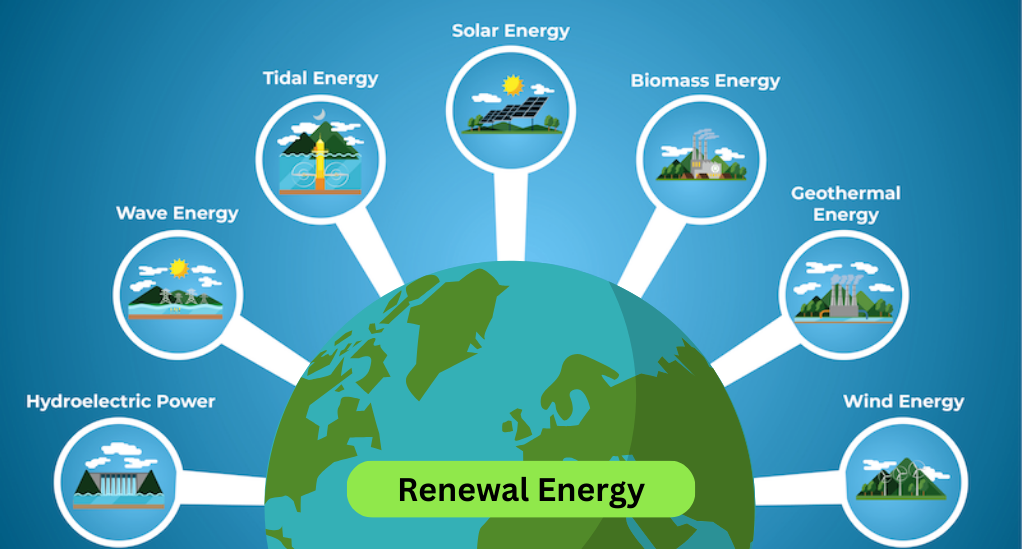
Key Characteristics of Renewable Energy
- Inexhaustible: Renewable energy sources, such as sunlight, wind, and water, are continuously available and will not run out.
- Low Environmental Impact: They produce little to no greenhouse gas emissions or pollutants, minimizing their environmental footprint.
- Versatility: Renewable energy can be harnessed in various forms, including electricity generation, heating, and transportation.
Why Solar Power is Renewable
Solar power is inherently renewable due to its source—the sun. The sun is a colossal, self-sustaining nuclear fusion reactor, emitting an unfathomable amount of energy every second. As long as the sun exists, we have access to an abundant and renewable source of energy.
Solar Energy Conversion
The process of converting sunlight into electricity, as explained earlier, relies on photovoltaic cells. These cells directly convert sunlight into electrical energy without consuming any finite resources or emitting harmful pollutants. Solar panels continue to generate electricity as long as they are exposed to sunlight.
Environmental Benefits of Solar Power
The renewable nature of solar power brings about several significant environmental benefits:
Reduced Greenhouse Gas Emissions
Solar power produces electricity without emitting greenhouse gases, such as carbon dioxide (CO2) or methane (CH4). This reduction in emissions contributes to mitigating climate change and improving air quality.
Minimal Land Use Impact
Solar installations, whether on rooftops, solar farms, or as integrated building materials, have a relatively low impact on land use compared to fossil fuel infrastructure.
Water Conservation
Solar power does not require water for operation, unlike many traditional power plants that rely on water for cooling. This makes solar energy particularly valuable in regions facing water scarcity.
Comparing Renewable Energy Sources
To understand the role of solar power in the renewable energy landscape, let’s compare it to other prominent renewable energy sources:
| Renewable Energy Source | Key Characteristics | Applications |
|---|---|---|
| Solar Power | Abundant sunlight, versatile | Electricity generation, heating, more |
| Wind Power | Captures kinetic energy from wind | Electricity generation, wind farms |
| Hydroelectric Power | Harnesses the energy of flowing water | Electricity generation, dams |
| Geothermal Power | Utilizes heat from Earth’s core | Electricity generation, heating |
| Biomass Energy | Uses organic materials for fuel | Electricity generation, biofuels |
Solar Power’s Role in a Sustainable Future
Solar power plays a pivotal role in the transition to a sustainable energy future. Its renewability, minimal environmental impact, and versatility make it a cornerstone of efforts to combat climate change and secure a reliable energy supply for generations to come.
Solar Energy Plants
Solar energy plants are the backbone of large-scale solar energy production. In this section, we will take a closer look at different types of solar energy plants and showcase successful case studies from around the world.
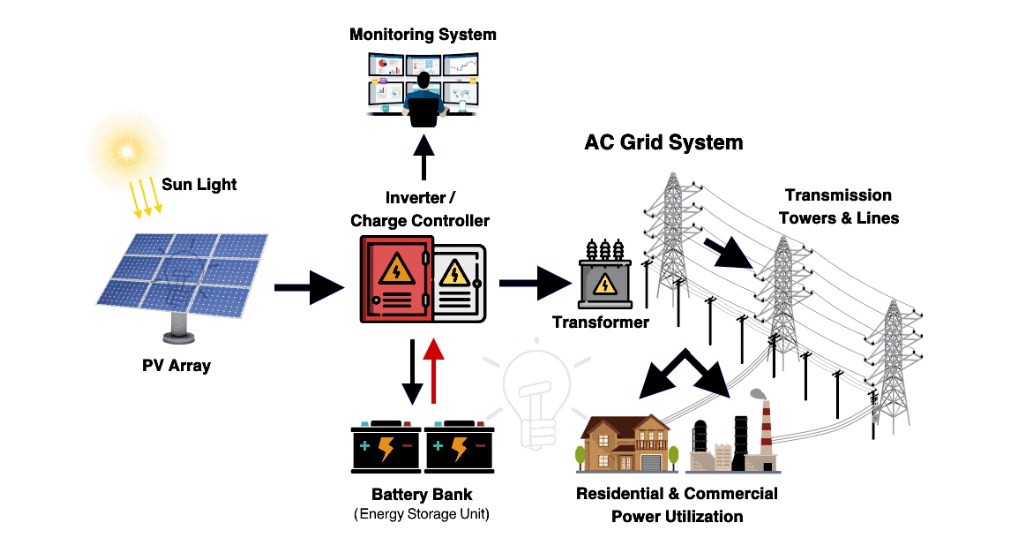
Types of Solar Energy Plants
Solar energy plants come in various forms, each designed to harness solar power efficiently. Here are some common types:
Solar Photovoltaic (PV) Plants
Solar PV plants consist of arrays of solar panels designed to generate electricity directly from sunlight. They are versatile and can be deployed on a variety of scales, from small installations to massive solar farms. The electricity generated is typically fed into the grid or used by nearby communities.
Concentrated Solar Power (CSP) Plants
CSP plants use mirrors or lenses to concentrate sunlight onto a central point, such as a tower or trough. This concentrated heat is then used to produce steam, which drives turbines to generate electricity. CSP technology is particularly suited for large-scale power generation.
Solar Thermal Power Plants
Solar thermal power plants use solar collectors to capture the sun’s heat, typically to generate steam for electricity production. They are well-suited for regions with high solar irradiance and are often used in combination with CSP technology.
The Future of Solar Energy Plants
The global push for renewable energy sources is driving the development of more advanced and efficient solar energy plants. Researchers are exploring innovations such as energy storage integration, improved solar panel technologies, and grid-friendly features to enhance the reliability of solar power.
Conclusion
In conclusion, solar energy, derived from the radiant power of the sun, represents not just a remarkable scientific achievement but a beacon of hope for a sustainable future. With its inexhaustible source, minimal environmental impact, and versatility, solar power is at the forefront of the global transition to cleaner energy sources. As we harness the potential of solar energy in applications ranging from electricity generation to transportation, we embark on a journey toward a greener and more responsible world. This renewable energy source not only promises to reduce our carbon footprint but also illuminates the path to a future where clean energy is the cornerstone of environmental stewardship and progress.

